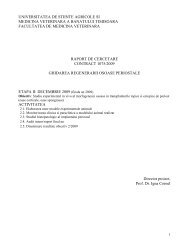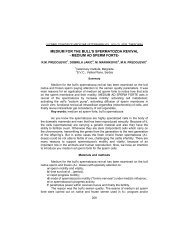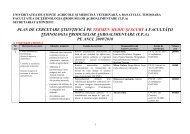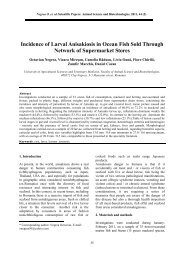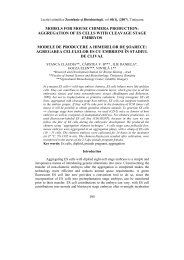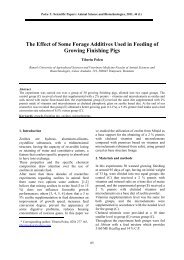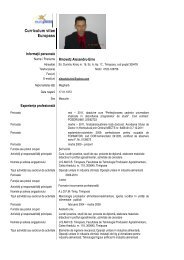journal of linguistic studies
journal of linguistic studies
journal of linguistic studies
You also want an ePaper? Increase the reach of your titles
YUMPU automatically turns print PDFs into web optimized ePapers that Google loves.
horizons. The student should be encouraged to get the global idea in the first place, and<br />
only in some instances should be asked to concentrate on bits and pieces <strong>of</strong> language<br />
itself. Furthermore, apart from being faced with language, the student is confronted with<br />
the cultural environment in which the film is set. The selection <strong>of</strong> films was the most<br />
important step in the process and constituted the biggest challenge. However, we tried to<br />
follow our national curriculum and reorganized some <strong>of</strong> the activities presented in the<br />
students’ course book.<br />
2.1. ABC STEPS FOR WHAT TO DO WHEN PLANNING A VIDEO LESSON<br />
There are three basic things to remember before choosing a film.<br />
- The most important thing was to be sure that teacher has watched the video unit<br />
before taking it into the classroom. Because, all classes are different and you may<br />
need to do some extra background work with the students before watching the<br />
film. The duration <strong>of</strong> the film is another aspect to be kept in mind. Long films can<br />
be used, but thorough planning is required to divide the film into several viewing<br />
sessions with pre-viewing and post viewing questions.<br />
- Teacher should check that all the students can see and hear the video, and that<br />
equipment is working properly, no matter is it a DVD or a projector with<br />
computer.<br />
- The activities should be prepared in a manner to invite the students to discuss the<br />
issues and topics both before and after watching. In this way they are exchanging<br />
personal opinions, and preparation is not needed. In cases where they are required<br />
to compare their culture with the UK, you may need to prepare the discussion by<br />
providing information about your country or eliciting ideas from the students.<br />
There are several ways <strong>of</strong> starting a video lesson but these activities can be done in<br />
advance <strong>of</strong> watching the video or as part <strong>of</strong> the video lesson, as a preview. We have put<br />
our students to work in pairs and showed them parts <strong>of</strong> the material to discuss with the<br />
students what they think the unit is going to contain. They were well prepared and felt<br />
more confident when they watched the video.<br />
Activities included were:<br />
- pair and group discussion – each group was given two <strong>of</strong> the 9 love stories from<br />
the film “Love Actually”;<br />
- brainstorming / guessing – students were supposed to guess what will happen to<br />
the pairs from the story (predicting and matching exercises);<br />
- vocabulary exercises – Christmas vocabulary, relationships, single<br />
mothers/fathers…<br />
These were activities which students did while they were watching the film. Teacher<br />
read the instructions to students before playing the film and checked they understand<br />
what they have to do. We asked them to watch the film once without writing. Then we<br />
played it again while they wrote their answers. Before playing the film again teacher can<br />
get students to check answers in pairs, or can elicit answers from a few students, and<br />
indicate if they need to watch more carefully (as a part <strong>of</strong> cooperative learning). Apart<br />
from these traditional viewing activities, freeze-frame techniques can be implemented to<br />
highlight some important images. For example, the introduction scene <strong>of</strong> PM and Natalie<br />
can be freeze-framed and we can ask students can they guess what will happen next with<br />
them. After watching a second time, we went through the answers with the students and<br />
watched the film again to confirm all that we needed.<br />
66



